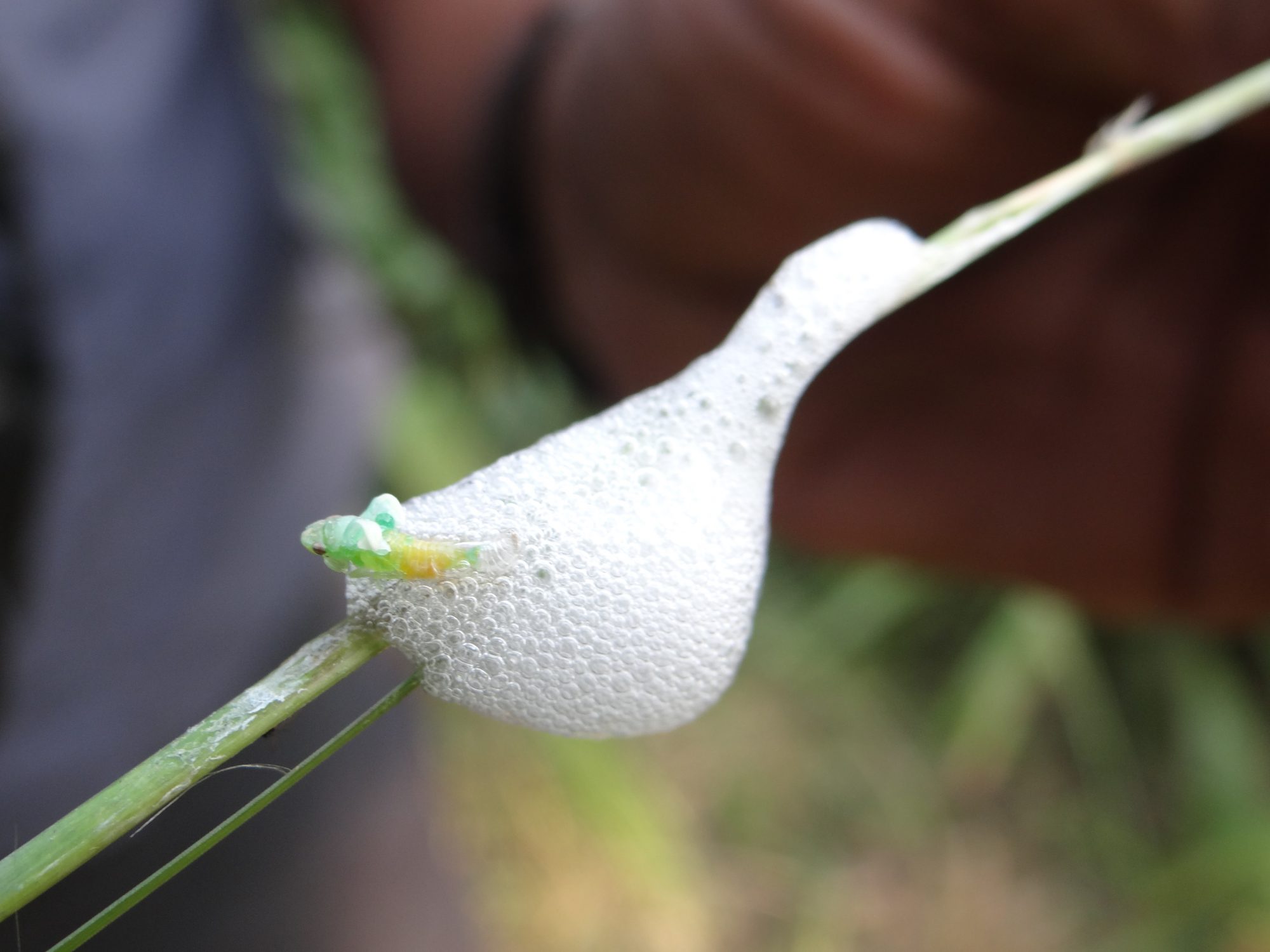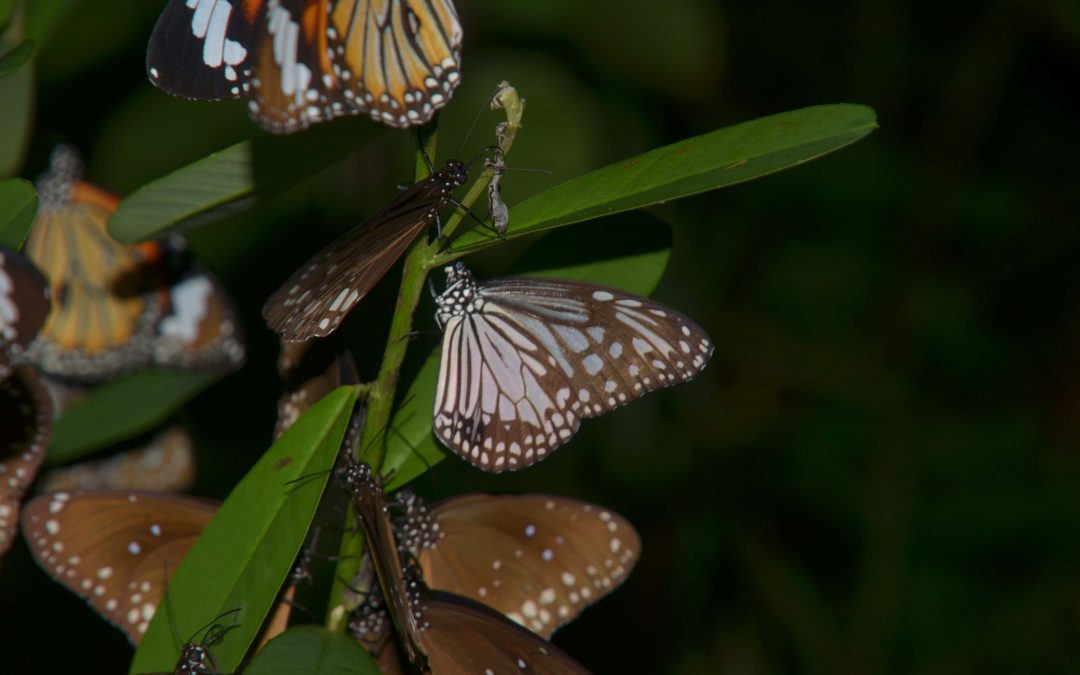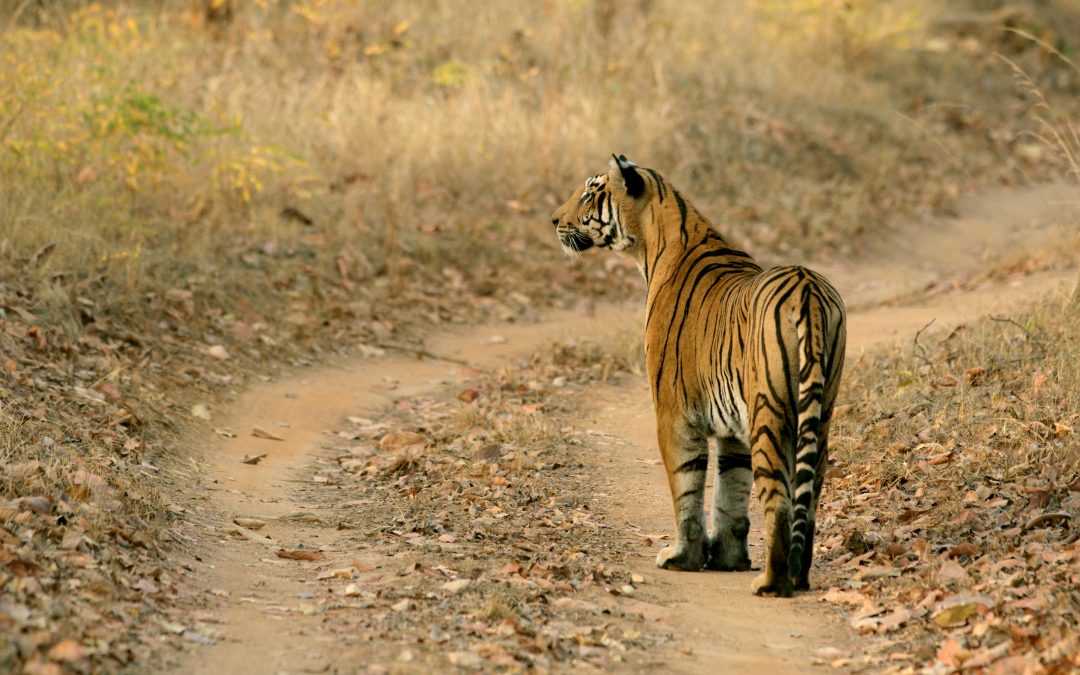One of the walks in farms when I was a child, I had noticed some spit on the plants, I had asked a farmer for answers on who spat in his fields early morning, to which he said it is a snake’s spit. Myths such as this varied from farmer to farmer, some said it was spat by frogs and some said a snail puked. In some cultures it is mystified to be witches’ spit or a cuckoo’s spit too. But the real culprit was hidden inside the spit itself. When the bug swims out of its busy morning a yellow nymph showed itself that had a fish-like head. A curious nudge into the spit, limped a bug that undid its proboscis from the stalk and looked out to enquire.
Now you don’t have to feel awful when you see them on your dear plants and lawn, especially on the stalks that hangs a white froth held longer at dew hours. More often than not, the spits are of a Spittlebug unless you have not waged war against your neighbor. These bugs might have fed excessively on the stalks to wear a gown of froth, which would probably keep the nymphs of the bug safe from predators and from drying away in heat or cold conditions. With a few days passing, the wings of the Spittlebug develop and the amount of spit reduces eventually.
What develops from a full grown Spittlebug is another remarkable senior; one that doesn’t spit but jumps called the Froghoppers which are an astonishing little talented creature. Some Froghopper species can shoot up 100 times its body length and sport brilliant colors and patterns for a tiny bug. Scientists have been using high-speed cameras at the rate of 8000 per second to find the kinematics of Froghoppers.
The locomotion of insects is done by using thoraxes, some develop tails, some leap like crickets that use hind legs as spring and some simply walk on all six and most take off on wings. Jumping insects need muscular strength to perform locomotion and an ability to guide themselves for landing. Our contender is by far one of the best jumpers, crickets and locusts do jump but a short distance on heavy hind-legs to make the purchase while Froghoppers with short hind-legs which is less than half their body’s length, and weighing only 2% of their body mass and they don’t even use their wings to aid their take-off does make them outstanding jumpers.
Working against gravity requires energy that Froghoppers have overcome in their body weight by simply weighing less. Their jumping performances are rest taken care by muscle structure inside their hind-legs that catapults them at velocities ranging from 2.4 to 4.5 meters per second! That is 15 kmph. And their readiness to jump with forever-cocked-position of hind-legs keeps the kinetic energy ready to leap of faith. This leap can take them to a height of up to 70 centimetres to land them to their destinations. The super charged legs have now outdone the high-jumper’s records of fleas.
Why do they have to jump? It is quite unclear, could their predators challenge them to do so like the parasitic wasps, rapid chopsticks of mantises, witty warblers, unwitty grazers and camouflaged spiders? From spitting to propelling to beautifully patterned wings, Froghoppers or Spittlebugs fascinate much as any insect would.











Recent Comments